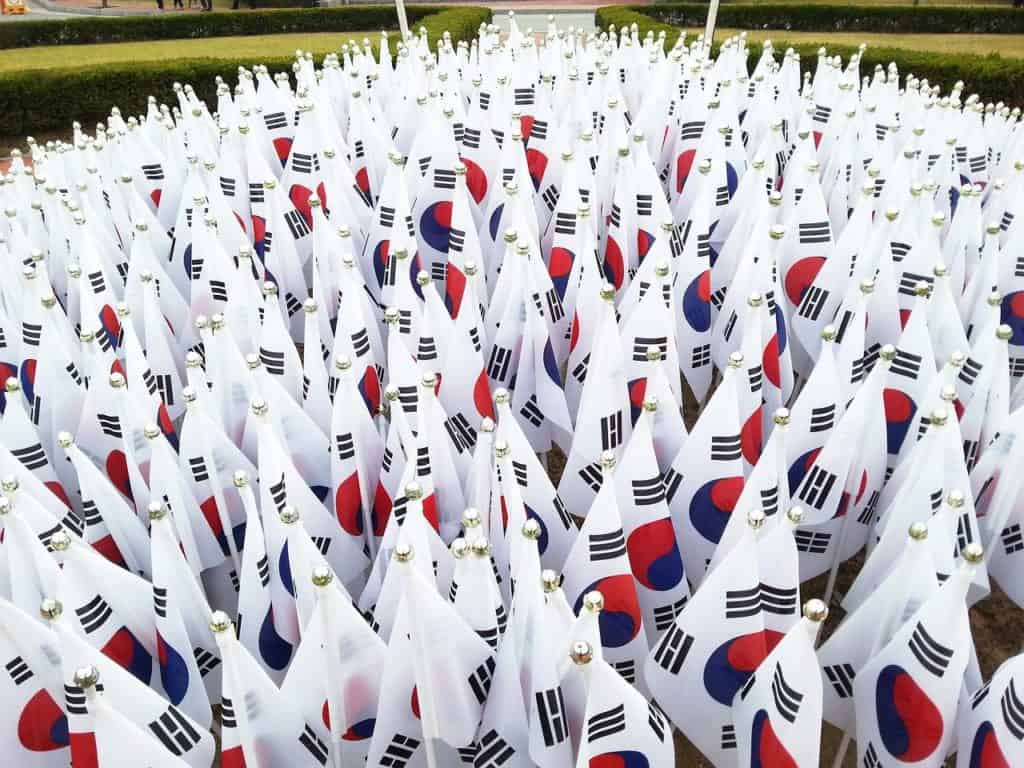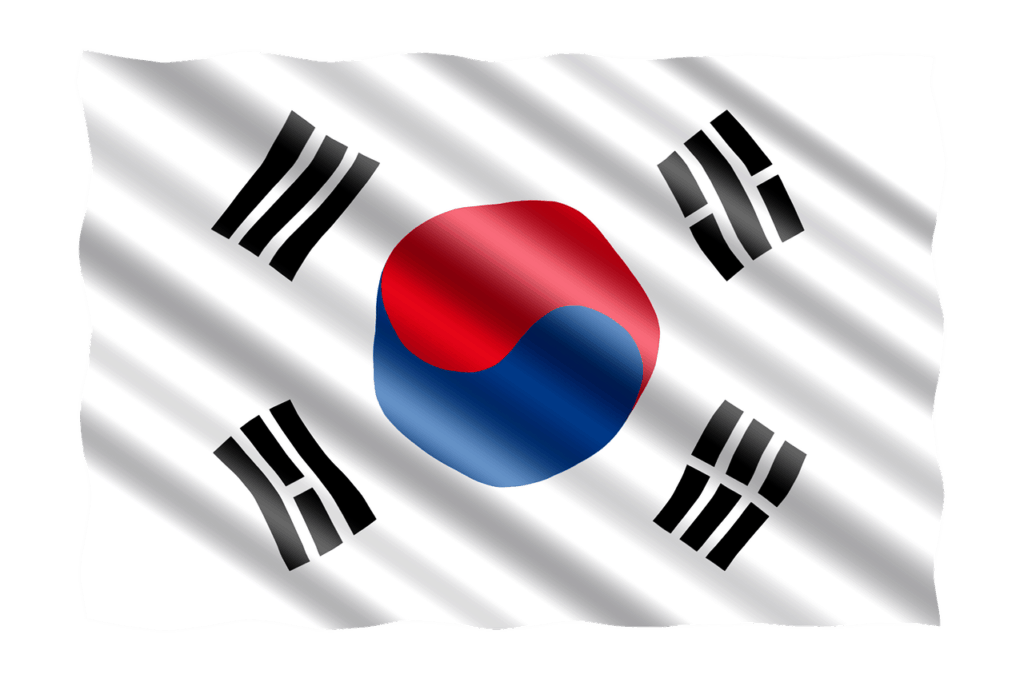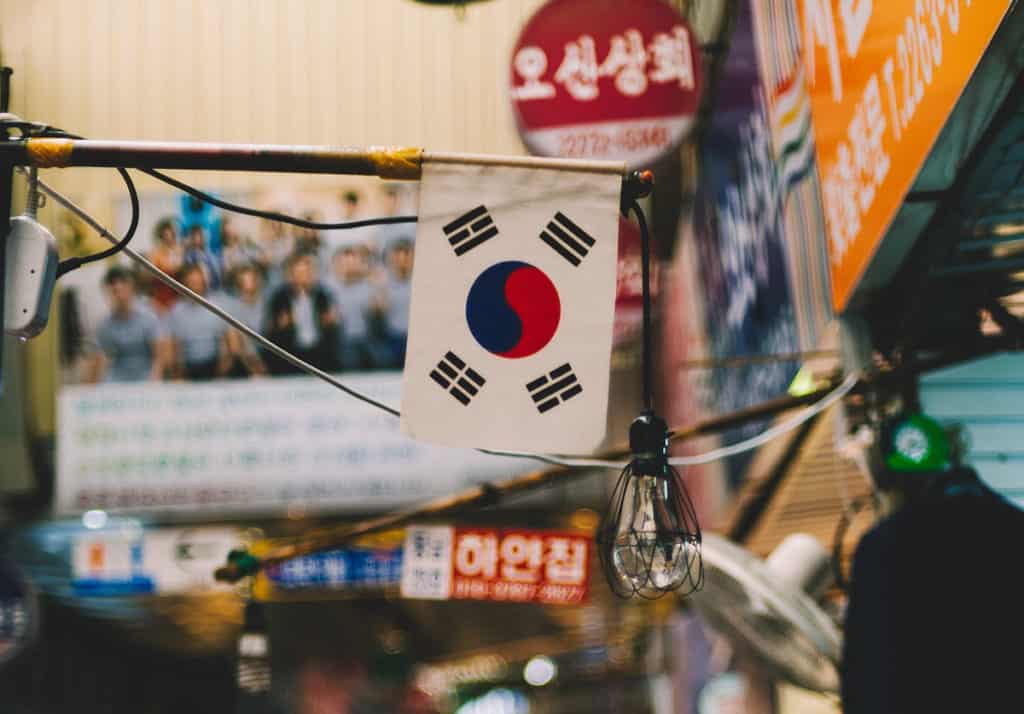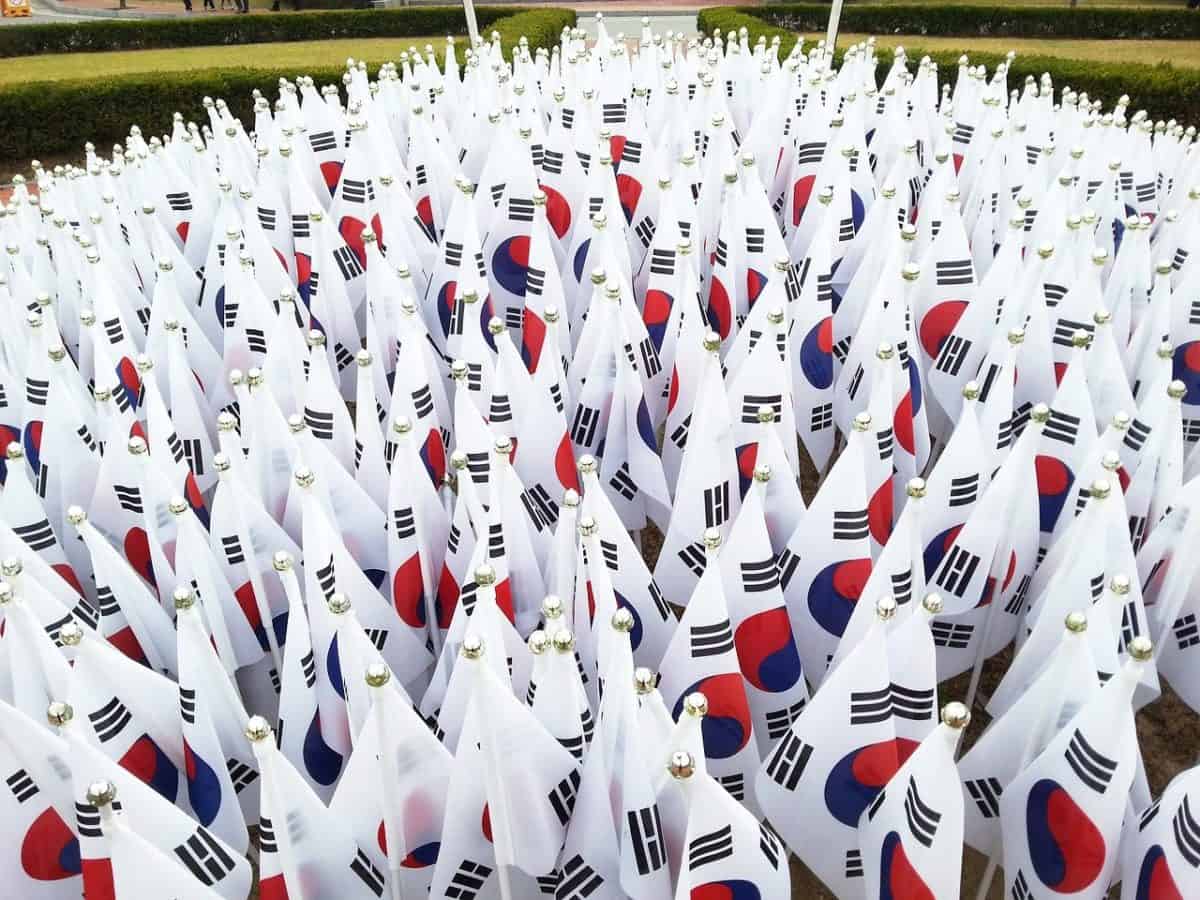
The South Korean Flag means supreme or ultimate. It is divided into 3 parts, the circle, the trigrams and the white background. It is a representation of the harmony or balance that all things in life bring to humanity.
Just like any other flag from any other nation, the flag of South Korea has a deep meaning and symbolism to its people. From the red and blue circle in the middle to the four sets of blacks bars surrounding it and the white the background on which they both sit.
There is a lot to more to learn about the Flag of Korea, and I am really excited to discuss its history and its meaning, so lets get started!
The flag has a white background with a red and blue symbol at the center. The white color is a symbol of peace and purity. The circle at the center represents a balance of the forces that exist in the universe.
There are four sets of black bars or Trigrams, at each corner of the flag which are symbolic of harmony and movement, with each having its own meaning. They symbolize heaven, earth, water, and fire.
The people of South Korea take a lot of pride in their flag. Just having it raised up is an indication of their aspirations rising above everything else. Simply put, it gives them a sense of purpose.
It’s a reminder of where they have come from and a vision of where they are going. The South Korean flag is so significant that Taekwondo athletes wear it as their Taekwondo flag.
Taekwondo, a Korean martial art, has the Korean flag as a representation of its origin. Indeed, the philosophy of Taekwondo is deeply embedded in the South Korean flag. Certainly, there’s more that the flag stands for that is worth delving into.
Before the 1870s, Korea never had a national flag, and neither did the country see the need for one. The need came to the surface in 1876 during the talks for the Japan-Korea Treaty.
What do the Bars Mean on the Korean Flag?

The bars on the Korean flag have a deeper meaning that is worth exploring. The bars bring the idea of opposites and balance. The bars symbolize the following:
- Heaven (upper left corner)
- Fire (bottom left corner)
- Water (upper right corner)
- Earth (bottom right corner)
The design of the flag shows that the bars representing heaven are directly opposite the bars representing earth. Also, the bars representing water are directly opposite the bars representing fire.
The bars are symbolic of essential virtues like humanity, fairness, intellect, courteousness, fruition, and vitality. A deeper look at the bars brings the concept of balance between the physical and spiritual worlds so as to create the much-needed harmony.
In regards to the martial art of Taekwondo, the South Korean flag brings the same connotations as well. Taekwondo athletes respect the flag greatly to such an extent that it’s even been adopted as the Taekwondo flag.
Just like the bars on the South Korean flag, Taekwondo athletes wearing the flag believe in the concept of opposites. In essence, a competitor in Taekwondo will either attack or yield.
This is a demonstration of how the concept of balance comes into play. Thus, the symbolic representation of the Korean flag reveals that Taekwondo is not only a style of combat, but also a way of life.
What Do the Blue and Red Colors Mean on the Korean Flag?
The center circle of the flag of South Korea is half red and half blue. Theese colors symbolize the balance between opposing forces or Yin and Yang. In this regard, blue symbolizes Yin or the negative forces while red represents Yang or the positive forces.
Examples of the forces include: light-dark and good-evil.
What is the History of the Flag of South Korea?
As a result, the Korean national flag was adopted in 1882 and the government established it formally in 1883. The division of Korea at the end of the Second World War in 1945 meant that each country had to use its own flag.
Both North and South Korea designed independent flags after the division. It was on October 15, 1949 that the then government officially declared the current South Korean flag a national symbol of unity.
However, it’s important to take note that even before the flag was officially declared before the South Korean people, it was still being used as the national flag.
It’s important to point out that the South Korean flag is seen as a representation of the Korean people as a whole, and not for the South Korean nation-state only. The flag has continued to bring a sense of pride and significance to all South Koreans from different walks of life.
For information on the history of TaeKwonDo, check out my post
Why Is The Flag of South Korea Hung Vertically?

The south Korean flag is hanged vertically so that it can maintain its significance and meaning. The symbols of the flag are designed strategically at different positions for a reason. For example, the four bars surrounding the flag at the four corners are symbolic, so they have to be hanged in a vertical way.
Therefore, the flag of South Korea is hung vertically by ensuring that the top left corner still remains at the top left while the top right corner remains at the right.
Irrespective of where one is hanging it, it should remain like that so that the symbols remain at their positions. In case the positions are shifted, the placement of the symbols will change and the original meaning will be lost.
Final Thoughts
Without a doubt, a flag has a deeper meaning that drives the actions and beliefs of those to whom the flag belongs. The South Korean flag has a fundamental meaning to the citizens of the nation.
Since its declaration as the South Korean national flag, it’s evident that the values, beliefs, aspirations, and ideals of South Koreans are embedded in the meanings that it carries.
The principles and ideals of TaeKwondo are in line with what the flag stands for. In fact, the origin of Taekwondo is attributed to the Korean flag. That is why Taekwondo athletes respect it. Certainly, the South Korean flag is not only a symbol of where the country has come from, but also a representation of the nation’s future.


